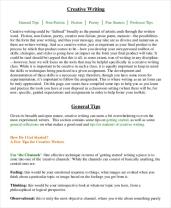How to get a poem published?
Getting a poem published involves several steps, and while it can be a competitive process, there are strategies to increase your chances of success. Here are essential steps to help you get your poem published:
1. Refine Your Poem:
- Polish your poem to its best possible version. Revise for clarity, imagery, and emotional impact.
2. Research Literary Journals and Magazines:
- Identify literary journals, magazines, or online platforms that publish poetry. Consider the style and themes they typically feature.
3. Read Submission Guidelines:
- Carefully review the submission guidelines of each publication. Follow formatting, length, and submission method requirements.
4. Create a Submission Package:
- Prepare a submission package that includes your poem(s), a cover letter, and a brief bio. Follow the guidelines on how to format these elements.
5. Craft a Cover Letter:
- Write a concise and professional cover letter. Include a brief introduction, mention why your work is a good fit for their publication, and express appreciation for their time.
6. Submit Simultaneously and Widely:
- Submit your work to multiple publications simultaneously to increase your chances of acceptance. Ensure that simultaneous submissions are allowed, and notify publications promptly if your work is accepted elsewhere.
7. Consider Literary Contests:
- Submit your poems to reputable poetry contests. Many contests offer publication as part of the prize, and winning can provide exposure for your work.
8. Build a Portfolio:
- Establish a portfolio of published work over time. Having a record of published poems can strengthen your submissions to other publications.
9. Utilize Online Platforms:
- Explore online platforms and literary communities that accept poetry submissions. Some websites and digital journals provide opportunities for poets to share their work.
10. Engage with the Literary Community:
- Attend poetry readings, workshops, and literary events. Engaging with the community can help you network, receive feedback, and discover new opportunities for publication.
11. Persistence and Patience:
- Rejection is a common part of the submission process. Be persistent and patient. Use rejection as an opportunity to learn and improve your craft.
12. Build a Professional Relationship:
- If your work is accepted, build a professional relationship with the editors. Express gratitude, follow their guidelines for publication, and consider submitting to them again in the future.
13. Consider Self-Publishing:
- If traditional publishing proves challenging, consider self-publishing through platforms like blogs, personal websites, or self-publishing platforms. This allows you to share your work independently.
Remember, the world of poetry publishing can be competitive, and success may take time. Keep refining your craft, stay informed about submission opportunities, and persist in sharing your work with the literary world.
Navigating the Path to Publication: A Guide for Poets
Getting your poems published can be an exciting and rewarding journey, but it can also feel daunting. This guide should help you navigate the different avenues and strategies for sharing your voice with the world.
1. Steps and Strategies:
- Polish your poems: Get feedback from trusted readers, attend workshops, and revise your work relentlessly.
- Find your niche: Research different poetry journals and publishers to identify those that align with your style and themes.
- Build your portfolio: Start by submitting to smaller publications and competitions to gain experience and recognition.
- Network with other poets: Participate in open mic nights, online communities, and conferences to connect with peers and potential readers.
- Consider self-publishing: Explore platforms like Amazon Kindle Direct Publishing or poetry-specific services to take control of your work.
2. Traditional Avenues:
- Literary Journals & Magazines: Many established publications accept poetry submissions through online portals or mail. Research submission guidelines carefully and follow them precisely.
- Poetry Presses: These publishers focus on poetry collections and often seek established poets with a proven track record. Submitting a manuscript requires a more formal proposal.
- Anthologies & Contests: Consider submitting to themed anthologies or poetry contests to gain exposure and potentially win valuable prizes.
3. Submission Process Variations:
- Requirements: Guidelines may specify formats, number of poems, and simultaneous submission policies. Always read them thoroughly.
- Reading Fees: Some journals charge reading fees, so budget accordingly.
- Response Times: Expect response times to vary from weeks to months. Be patient and don't submit the same poem to multiple publications at once.
4. Role of Literary Agents:
- Representation: Agents connect poets with publishers and advocate for their work. They handle negotiations and contracts.
- Selective Representation: Only experienced poets with a strong portfolio typically secure agent representation. Consider building your career before searching for an agent.
5. Increasing Acceptance Chances:
- Tailor Your Submissions: Choose publications that resonate with your work.
- Polish & Proofread: Submit error-free poems that showcase your talent.
- Follow Instructions: Adhere to formatting and submission guidelines meticulously.
- Read the Publication: Familiarize yourself with the journal's style and content.
- Persistence: Rejections are common. Don't be discouraged, keep refining your work and submitting.
Remember, getting published is a journey, not a destination. Focus on continuous improvement, enjoy the creative process, and celebrate every step along the way.
Additionally, online resources like Poets & Writers, Submittable, and The Academy of American Poets offer valuable advice and submission opportunities for poets. Good luck!













